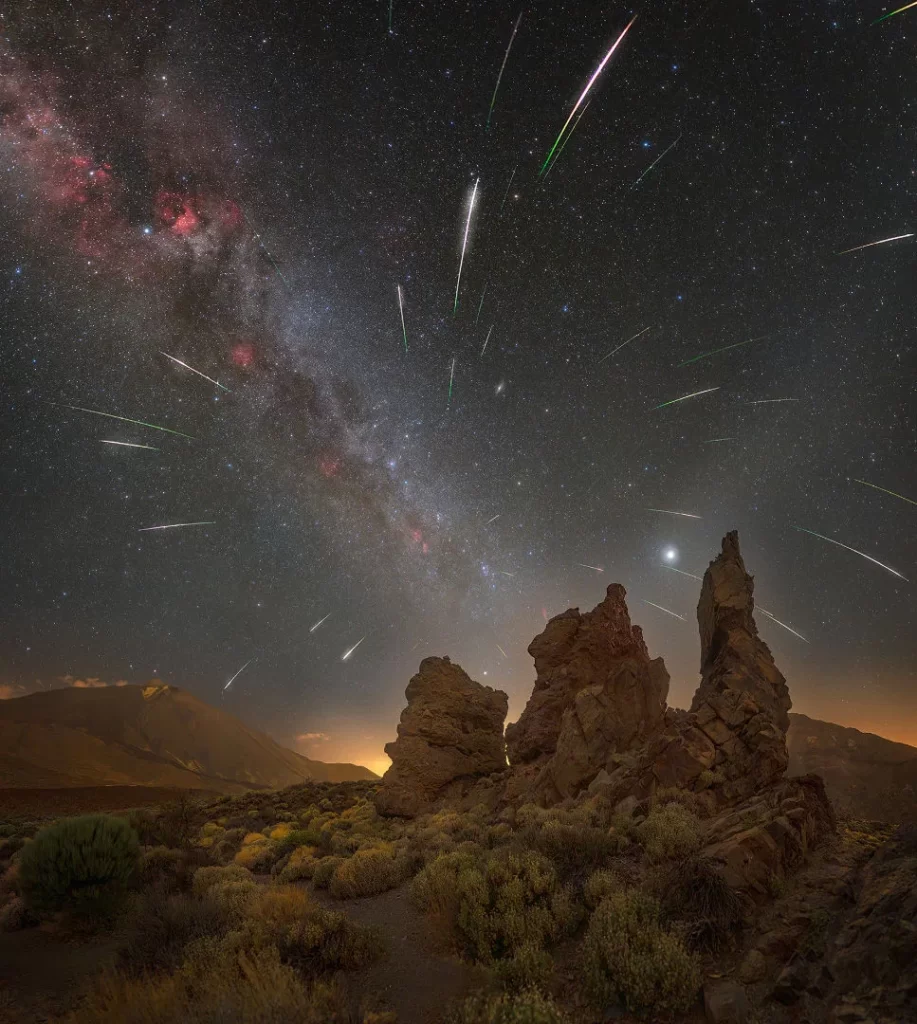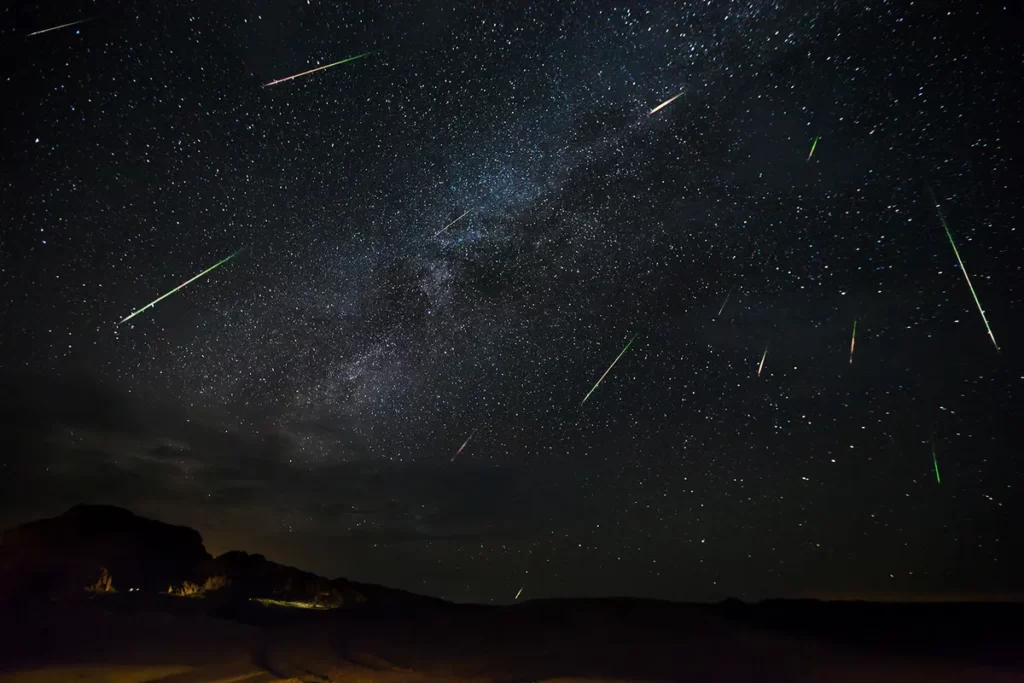The Perseid meteor shower is one of the best meteor showers of the year, under the right conditions, and a great summer stargazing event.
We are now officially in Perseid season, which lasts from around 17 July to 24 August every year.
Nights get longer and darker during August, and one of the first great stargazing events after the summer solstice is the Perseid meteor shower.
In 2025, it’s predicted to peak at 21:00 BST (20:00 UT) on 12 August.
Several minor meteor showers also reach peak activity in the days around this period, but viewing could be tricky with a bright Moon in the sky.

Normally, the best time to see the Perseid meteor shower is on the nights of 11/12 and 12/13 August, as these dates produce the best rates.
The shower is active from late July through to late August, but the hourly rate is low for much of this period, only showing noticeable enhancement between 9/10 and 15/16 August.
However, the 2025 Perseid meteor shower peak will have to contend with glare from a bright, nearly-full Moon.

Observing during the peak:
The rise and fall from the peak rate of the Perseid meteor shower is typically quite sharp, over the course of several hours.
The night before the peak should show rates increasing as dawn approaches.
Rates naturally increase after local midnight (UT) and, with the radiant getting higher, the run-up to dawn on 12 August is optimum.
Source: BBC – Sky at night Magazine by Pete Lawrence
Also read: Record warm seas help to bring extraordinary new species to UK waters
For more videos and updates, check out our YouTube channel.


